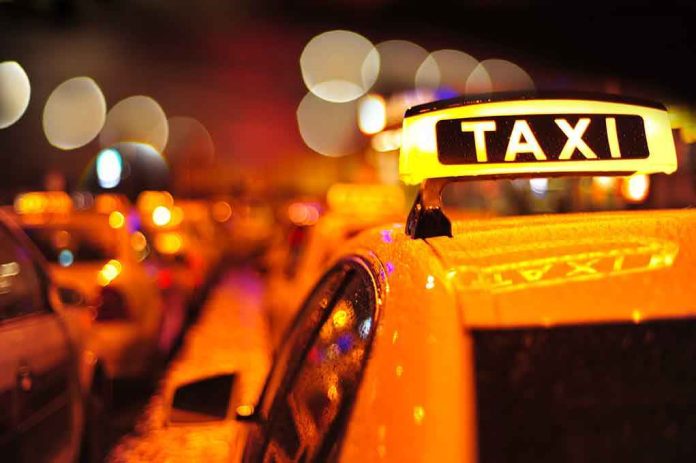
New Yorkers hoping for a future free of reckless government experiments are now watching as driverless car companies invade their streets—but thanks to state law, so-called “autonomous” vehicles still require a human safety monitor, putting the brakes on any far-fetched dreams of a robot taxi takeover.
At a Glance
- Waymo has begun testing self-driving cars in New York City, but each vehicle must have a human safety driver due to state law.
- The current operation is strictly for data collection and mapping; there’s no public robotaxi service yet.
- Waymo and state officials are lobbying for legislative changes to allow true driverless vehicles in the future.
- Incidents like recent software glitches and robotaxi recalls highlight persistent safety questions and public skepticism.
Waymo’s NYC Experiment: The Latest Tech Intrusion With a Human Catch
Waymo, the Google-backed behemoth that wants to put robots behind the wheel, has rolled its so-called “autonomous” vehicles onto the streets of Manhattan and Brooklyn. But here’s the punchline: every one of these super-smart, data-hoovering cars is required by law to have a human sitting behind the wheel, ready to take over if things go haywire. So much for the driverless utopia. Instead of unleashing a wave of Silicon Valley “innovation” on New York’s already-chaotic streets, Waymo has to play by the rules and keep a flesh-and-blood adult in the driver’s seat at all times. The company’s public road testing began in July 2025 after receiving a permit from the New York State Department of Transportation, but don’t expect to hail a robotaxi anytime soon. The current focus is on mapping the city and collecting real-world data, with the supposed promise of full automation still locked behind legislative red tape.
The real kicker? All of this is happening in a city famous for aggressively regulating everything from soft drinks to plastic straws, yet now New Yorkers are supposed to trust that a Google subsidiary—fresh off a 2025 recall involving over 1,200 cars that crashed into stationary objects—can safely navigate the nation’s most complex traffic labyrinth. It’s a bizarre spectacle: the tech elite pushing their agenda, while the law keeps a human in place as the last line of defense against software with more bugs than Times Square has pigeons.
The Political Circus: Lobbying, Legislation, and the “Future” of Mobility
Waymo’s incursion into New York is just the latest front in the ongoing war over who gets to control America’s streets: the tech oligarchs or the public—and make no mistake, this is about control. The company, along with the New York State DOT, is lobbying hard for the state legislature to change the law so their cars can operate without any human oversight. Lawmakers, of course, are taking their sweet time, no doubt pondering the political calculus of letting robot-driven cars loose in a city where potholes outnumber parking spots and taxi drivers still wield considerable influence. Until the law changes, Waymo’s fleet remains in a holding pattern, stuck in the uncanny valley between futuristic promise and regulatory reality.
In the meantime, Waymo is busy cozying up to local organizations and educational institutions, promising new jobs in AV maintenance and technician training. Bronx Community College is already on board, hoping to cash in on the workforce of the future. But for now, it’s all just talk. The traditional taxi and rideshare industries are watching with suspicion, knowing full well that the endgame is to replace human drivers with software and sensors. The city’s famously gridlocked traffic and unpredictable pedestrians aren’t making things any easier for the robotaxi pitchmen, either.
The “Innovation” Nobody Asked For: Safety, Jobs, and Common Sense
Waymo’s cheerleaders insist that robotaxis will eventually make streets safer and cheaper. But recent history suggests caution—and a healthy dose of skepticism. The company’s software recall after its vehicles crashed into parked objects, along with well-publicized incidents of AVs blocking emergency vehicles and causing confusion, are reminders that “driverless” doesn’t mean “flawless.” Proponents keep touting the industry’s safety record, but the truth is, the technology still isn’t ready for prime time in New York’s chaos.
For ordinary New Yorkers, the only immediate impact is the spectacle of yet another big tech experiment being foisted on their city, with no public service on offer and no public input. Real taxi and rideshare drivers—actual human beings with families—know what’s coming if the law changes: lost jobs, less accountability, and more power handed over to the likes of Google. The public, meanwhile, is being asked to trust that the same people who can’t keep the subway running or the streets clean will somehow oversee the smooth introduction of robotaxis, all while the state is still struggling to handle real crises like crime, illegal immigration, and inflation driven by out-of-control government spending. Funny how there’s never any money for fixing potholes or hiring more cops, but there’s always a blank check for the next Silicon Valley boondoggle.





